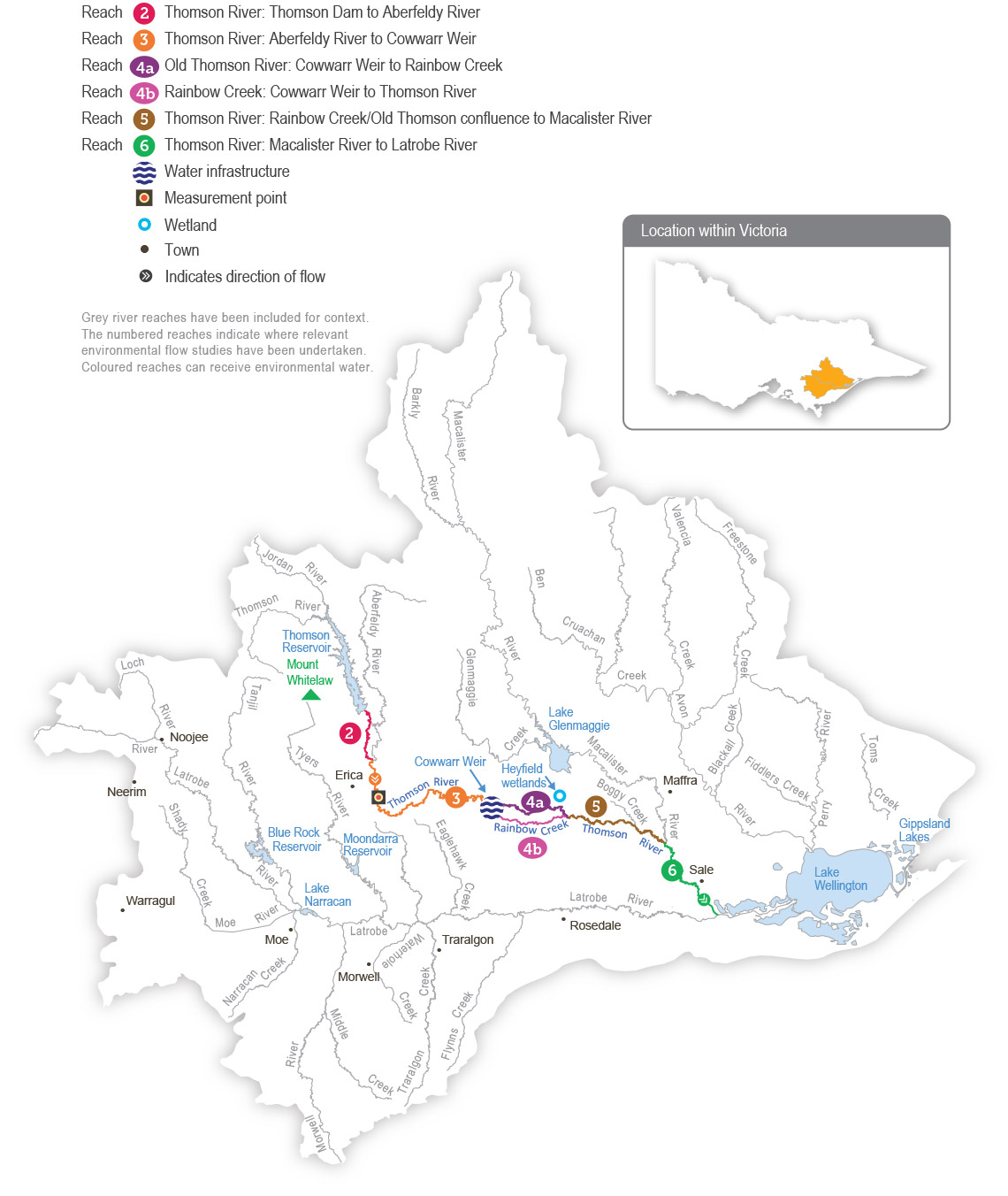Thomson Reservoir harvests most of the flow from the upper catchment of the Thomson River and significantly affects the flow in all downstream reaches. The Aberfeldy River now provides most of the natural flow to the Thomson River below Thomson Reservoir and is essential for providing natural freshes and a high flow.
Water for the environment is held in the Thomson Reservoir and released into the river as required. Reach 3 of the Thomson River (from the Aberfeldy River confluence to Cowwarr Weir) is the highest priority for delivery of water for the environment due to its heritage river status, high-value native streamside vegetation, high-quality in-stream habitat and low abundance of exotic fish species.
At Cowwarr Weir, the Thomson River splits into the old Thomson River course (reach 4a) and Rainbow Creek (reach 4b) (see Figure 2.3.1). Passing flow throughout the year is split two-thirds down reach 4a and one-third down reach 4b to avoid impacts to irrigators located on Rainbow Creek. Water for the environment is primarily delivered to the old Thomson River course (reach 4a) to support fish migration as Cowwarr Weir impedes fish movement through Rainbow Creek.
The Heyfield wetlands is a cluster of pools located between the Thomson River and the township of Heyfield. The construction of levees and weirs along the Thomson River means that river water rarely enters the wetlands. While the largest pool receives stormwater from the Heyfield township, smaller ponds rely on rainfall or pumped water for the environment to maintain environmental values. These values include wetland plant communities planted in recent years as part of a comprehensive revegetation program.




